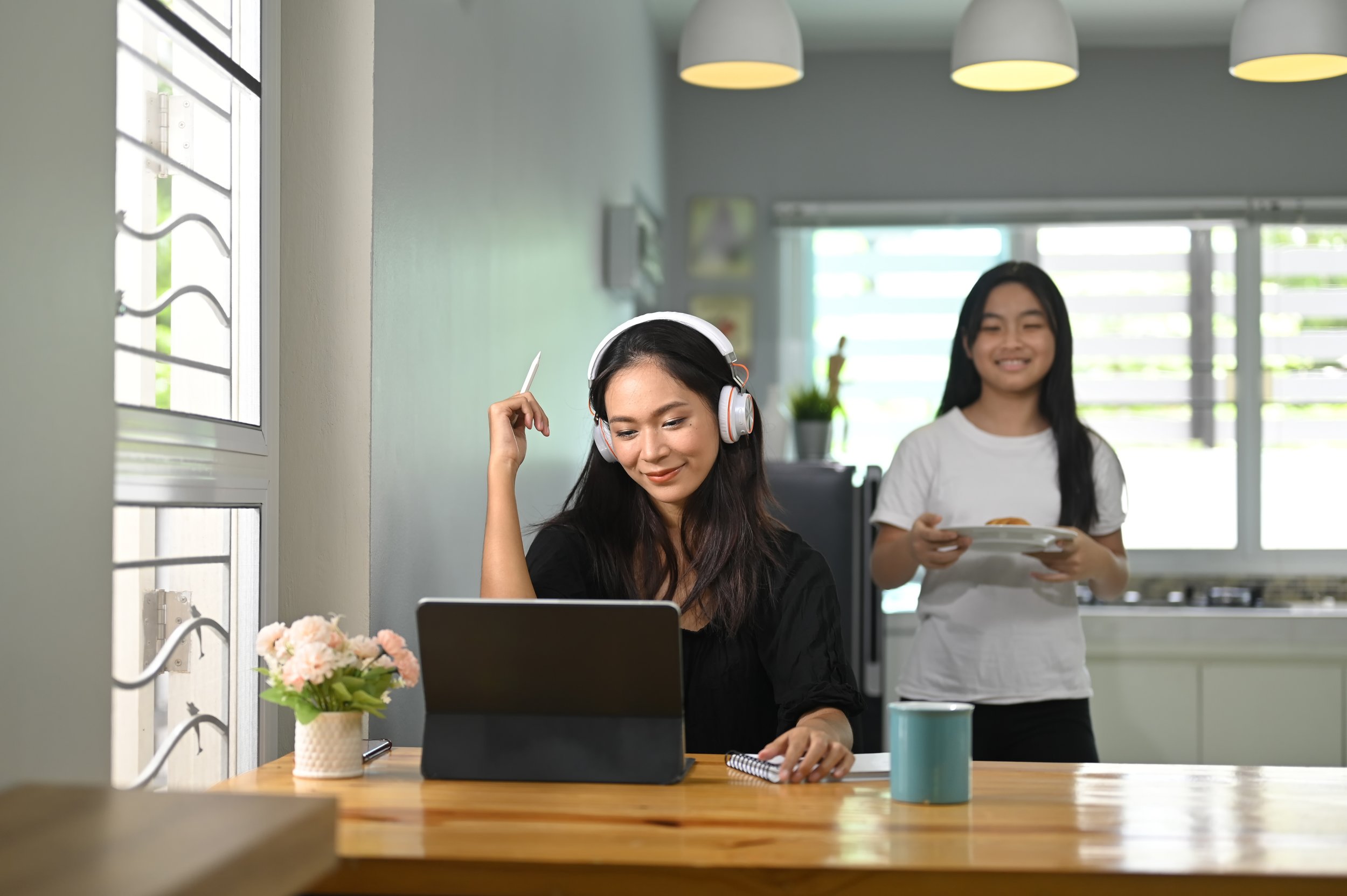Sometimes Homeschooling Is Right for One Kid in Your Family and School Is Right for Another One — And Good Homeschooling Is Supporting That
When I first started homeschooling, I’m pretty sure I believed that homeschooling was all-or-nothing: either you homeschooled your kids throughout their childhoods, or you sent them off to school. But many families I know aren’t like that. Maybe their kids homeschool for most of their childhoods, then head to junior high or high school. Maybe their kids avail themselves of select activities at schools but remain homeschoolers. Maybe some of a family’s kids attend school, while others homeschool.
We’re that kind of family — a part homeschooling, part schooling family. Our 13-year-old son learns at home and has no interest in going to school — ever. Our 10-year-old daughter attends a private, part-time “school for homeschoolers” and says she never wants to go back to full-time homeschooling. It’s a combination that works surprisingly well for our family. You’d never know just how much hand-wringing and agonizing it took to get us to this point.
Our part-time schooling arrangement came about during a particularly long, brutal winter up here in Minnesota in 2013-2014. Cooped up by heavy snow and wind chills that were regularly hitting 20 or 30 below zero, the only learning we seemed to be doing was about working through interpersonal conflict, and boy, was there a lot of that kind of learning. I was stressed. They were stressed. My energy for homeschooling was at an all-time low.
One bitter-cold February day, I sat both kids down in the living room and said I thought we needed to really look at whether homeschooling the way we were was the happiest choice for our family. My daughter, then eight, burst into tears.
“But I don’t want to go to school!” she wailed.
I told her there might be another, less drastic option. A few old homeschooling friends of ours had ended up attending a three-day-a-week Christian Montessori school intended to give homeschoolers some of the benefits of school while allowing time for family learning, too. The school had unusually long breaks — six weeks off in December and January, two weeks in March — and finished for the year in mid-May. There were no grades, no tests, and minimal homework. It felt like School Lite — a gentle way to try out school without completely giving up on homeschooling.
My son was emphatically not interested. My daughter agreed to check it out.
The day we toured the school, I was impressed by the school’s peaceful, friendly atmosphere. But there were also things that gave me pause. The school was run by evangelical Christians, but our family isn’t Christian. Would my daughter be accepted here? Could we as a family feel comfortable here even though we don’t go to church and aren’t believers?
My daughter was quietly observant throughout the school tour, her body language stiff. By the end of the tour, I was sure she was going to say she wasn’t interested. Honestly, I kind of wanted her to say she wasn’t interested. As miserable I’d been with homeschooling that winter, I didn’t feel ready to give it up, either.
As we left the school and walked to our car, I asked my daughter, “So, what did you think?”
“I liked it!” she declared. She was perfectly clear on the matter; she was going to that school that fall.
I wept many tears that spring and summer, agonizing that sending her to school was a big mistake (always out of sight of my daughter, of course).
My daughter did occasionally feel out-of-place attending a school where almost all the other kids were regular churchgoers. She was startled when one teacher mentioned that they didn’t teach about evolution at her school, but that they prayed for people who believed in it. My daughter had taken a class about evolution at our local zoo the year before and had read extensively about it at home. The idea that her school would completely dismiss discussing it floored her.
At home, we talked about approaching these sorts of differences as a chance to learn about the range of perspectives that make up our country and our world and the different ways people approach controversy and disagreement. We brainstormed how she could stay true to herself even if she didn’t feel comfortable speaking up loudly at school. I was grateful that our family’s work together as homeschoolers had laid down a foundation for us to talk this way, and that my daughter’s years as a life learner have given her a strong sense of self she can fall back on when she feels confused or out-of-step with the people around her.
As that first year went on, my daughter found that she really liked the way Montessori learning combines structure with freedom of movement and choice. She’s also fairly introverted, and she found that her school — a school where “nobody knows how to be mean,” as she put it recently — helped her come out of her shell. Seeing the same kids regularly in a routine, predictable environment was more comfortable for her than going to unstructured homeschool play groups, where she’d mostly clung to my side and not talked to the other kids. Once-a-week, short-term classes for homeschoolers also hadn’t really given her enough time to warm up to other kids.
I still don’t believe that school is necessary for kids to get “socialized” — it’s simply that for my individual kid at the developmental stage she was at, this particular school was a better social fit.
Meanwhile, back at home, my son was enjoying having three days a week of one-on-one time with me, combining a few classes at a local homeschooling co-op, a bit of math, lots of reading, and plenty of time pursuing his passionate interest in all things gaming-related. Some days, it felt like we had our own little writer’s colony of two, as my son worked in one room on video game-inspired fan fiction or creating the rules, characters, and storyline for a role-playing game he was designing, and I worked in another room on my own writing. We’d check in with each other over lunch, a board game, or during a hike by the Mississippi, two creative colleagues egging each other on.
My daughter is now preparing for her third year at her school. It will probably be her last one there; she’s feeling ready for a secular learning environment, where she doesn’t worry that she might scandalize a schoolmate if she mentions a pop singer she likes or alienate a teacher if she mentions evolution in a school project.
Luckily for us, there’s another part-time option for schooling here in our town, a public charter school where students attend classes in person three days a week and then work at home two days a week. She is hoping to transfer there for sixth grade. She wants school, yes, but she still wants a bit of freedom about how she spends her days, too.
I tell her that if she’d ever like to return to homeschooling, it’s always an option. She just smiles. “You really want me to come back to homeschooling, don’t you?” she teases me.
Well, yes, I’d love for her to come back to homeschooling. But what I want even more is for her to know she has choices. I’ve learned I can trust her to make the best of whatever situation she’s in and to know what’s right for her, even if it’s not what I would have chosen for her. She’s learned that she can handle new experiences with grace, take the good with the bad, and then walk away when something is no longer working for her. Those are lessons that I think will serve us both well as she moves forward in her life’s adventures, wherever they take her.














CARRIE POMEROY lives in St. Paul, Minnesota with her husband and two children. A passionate reader, writer, and movie buff, she loves the way homeschooling has expanded her ideas about what real learning is and how it happens.